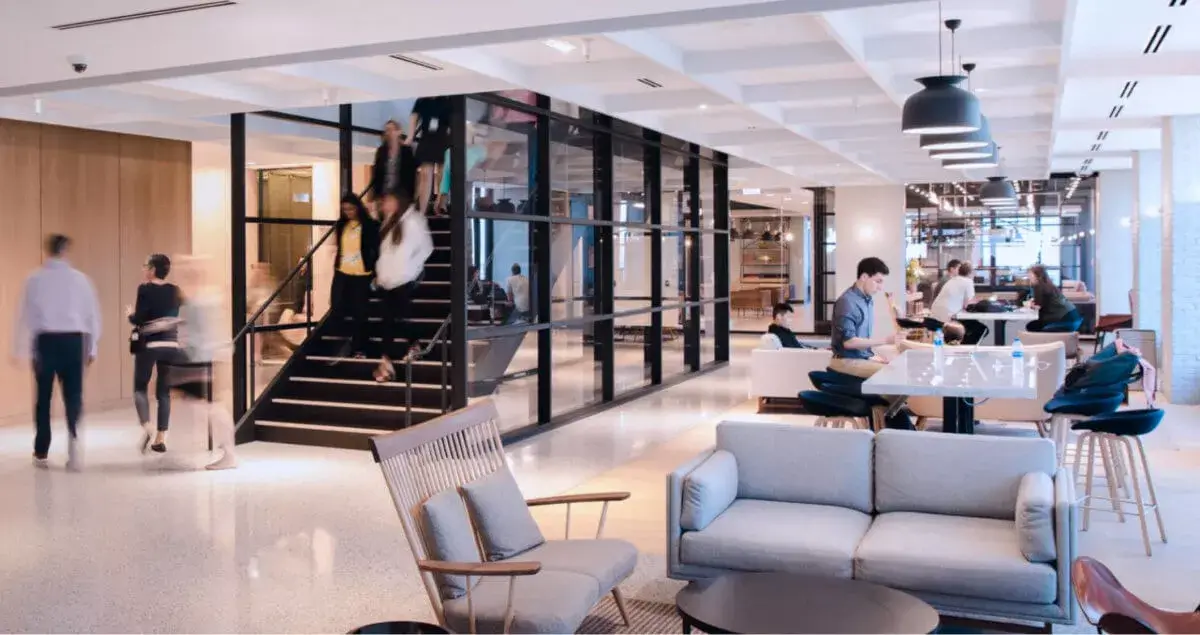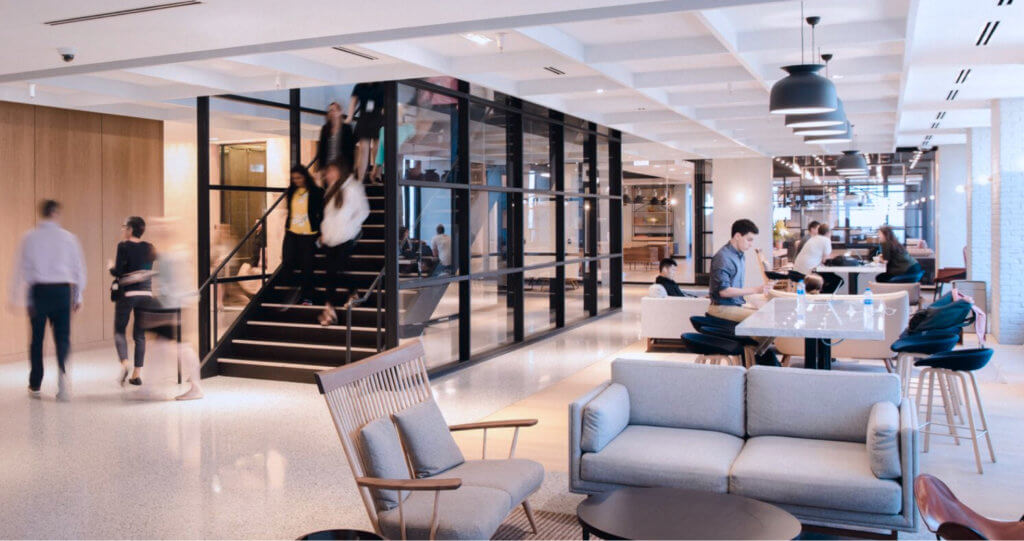
Return to Office (RTO) strategies are increasingly focused on redesigning and repopulating offices to maximize safety and productivity. But it’s still unclear what offices will look like in the long run as employees increasingly insist on some remote work.
While employers are redesigning office buildings to accommodate hybrid work, Microsoft’s 2022 Work Trend Index shows that half of business leaders are making plans to require full-time in-person work. However, a survey from Conference Board found that just 4% said they are currently requiring all employees to return to the workplace full-time.
One thing is clear: many employees are heading back to the office, at least part-time. And as they do, office buildings experience new strains, making technology that aids in occupancy tracking and building management more vital than ever. For example, it’s been over two years since building HVAC units have had to accommodate fully-populated office buildings.
Now is the time for leaders to decide what technology can help enhance their RTO strategy to optimize building occupancy and help employers stay compliant, while keeping workers safe and engaged.

The number of employed people working from home fell from 10% to 7.7.% between March and April of 2022. According to commercial real estate (CRE) company CoStar, 84% of 390 metro areas in the U.S. are experiencing an increase in occupancy. However, roughly 110 million square feet of office space remains vacant as a result of the pandemic.
The cost to maintain this space is a pain point for employers. Many executives feel that in-person work arrangements lead to better cooperation and accountability, and it’s hard to deny that it also helps justify large commercial real estate holdings. But a Pricewaterhouse Cooper (PwC) survey found that 56% of U.S. executives actually expect to need a large real estate footprint in the near future as their companies grow and they build larger, "pandemic-proof" offices that reduce worker density.
Elsewhere in North America, Mexican companies are looking for flexible space solutions to combat a weak demand for office space, which is not expected to recover until 2024. This includes re-zoning commercial space to create residential rental units to curb losses.
However, Canadian respondents to the PwC survey spoke of significant remodeling plans to accommodate different types of seating arrangements for hybrid workers (such as hot-desking arrangements) and new types of collaboration space that include technology to patch in remote workers to meetings. Meanwhile, some companies are looking to build satellite offices in the suburbs to complement their city headquarters and reduce commute times.
If the COVID-19 pandemic taught us anything, it’s that we cannot accurately predict when, how, or if things will get back to normal. However, we do have tools to help us make more informed decisions. For example, the use of IoT scanners to monitor real-time statistics on office usage, HVAC need, and lighting use. In addition, visitor management technology can track the number and identities of people on site as well as their movements, help businesses gauge their needs at any given time, and provide historical data for future office usage analytics.
For example, Sine’s visitor management technology records worker entries to the building as well as both planned and unplanned guest visits, giving customers precise data on building occupancy on different days at different times. In addition, security features like geofencing ensure tenants and guests stay within pre-determined boundaries for safety and security and guide people to where they need to be.
For most companies, back-to-work plans will move in phases, the first of which have been implemented in many buildings and require minimal strain on systems. But as more people return to the office, the availability of space becomes an issue. If seating arrangements are changed, for example, companies may need to employ a check-in system to ensure workers with flexible schedules don’t all show up at the same time and compete for space. Booking software can be a major bonus for companies that have reduced their real estate footprint or aren’t ready to expand it yet want to accommodate employee flexibility.
And flexibility will most likely be the word of the decade. FlexJobs’ 10th Annual Survey found that 44% of U.S. workers said they know at least one person who has quit or plans to quit because their employers are requiring them to return to the office full time. Nearly a quarter of respondents said they’d be willing to take a 10-20% pay cut to work remotely.

Maintaining a safe and healthy work environment has always been necessary, but the virus showed us the implications of close quarters and poor air filtration and circulation. Now, a safe work environment may mean reconfiguring space and updating major infrastructure. This is the case even if most of a company’s employees don’t have the option of working off-site. For example, retail and manufacturing companies are adding tens of thousands of jobs a month in spaces that are difficult to remodel for social distancing purposes.
Even office workers willing to quit before they return to the office full time typically need access to office features such as meeting rooms, desks, and printers. But it’s not always as easy as letting everyone back into their old spaces. Hybrid workers may no longer have full-time offices as spaces get repurposed. And as the pandemic evolves, social distancing, air filtration systems, and cleaning protocols all need to be taken into consideration based on office occupancy and frequency of use.
The key to managing office space in a time of continued uncertainty is understanding how space is utilized and controlling the flow of people throughout your facility. Leveraging workplace data and the insights provided by booking and occupant tracking software can give you the knowledge to fully utilize your workspace while simultaneously keeping it safe and productive for workers.
Having access to booking information, monitoring occupancy limits, setting up geofencing, establishing an office and seat reservation system, establishing the best cleaning protocols for heavily trafficked areas, and establishing social distancing protocols are integral steps in managing offices and making decisions about future real estate investments. Some companies predict they will need more space, others less, but regardless, informed decisions are based on good data.
Retaining the best talent requires companies to be flexible, even when it comes to real estate and building usage. This is a costly proposition, but employers can ease some of the growing pains by investing in software that provides accurate building usage data and helps manage building occupants in real-time.
Sine’s software system provides occupant screening and live tracking, capacity management tools, and many more features to assist with visitor management and improve workplace experiences in the offices of the future.